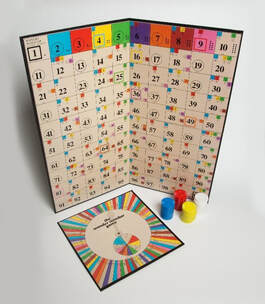The Wonder Number Game
|
A Brief History
In the early 1970s the Wonder Number Game was developed by a young schoolteacher named Melbourne T. (Tom) Brown. Brown and his wife, also a schoolteacher, had searched far and wide for an interactive way to teach their students basic math skills. After their search in several teaching catalogues and educational stores proved fruitless, Brown decided to create his own. In 1976, Brown received a U.S. Patent for the Wonder Number Game and successfully marketed it to teachers, parents, and students throughout the country. The Wonder Number Game provided a unique and revolutionary approach to teaching students basic math concepts in an exciting and fun way. Brown and his wife both used it in their classrooms and saw how effective the game could be. Since the 1970s, the Wonder Number Game has been completely updated to make it simpler than ever for parents and teachers to use the system to introduce and reinforce math concepts to children of all ages. The game is effective in the way it allows students to learn and practice the concepts, but also have fun while doing so. |
How it Works
The Wonder Number Game can be used to teach students from kindergarten to high school in the classroom, at home, or in a tutoring setting. MOTAL’s version of the game is very similar to the new and improved version available for purchase online. The game includes a game board, spinner and 100 chips in four different colors. With these simple tools, the teacher can instruct the students to play up to 4 distinct games, all focusing on different math skills.
Although it looks like a simple number board, the Wonder Number Game provides a platform for students to learn a long list of math concepts, including but not limited to;
The Wonder Number Game can be used to teach students from kindergarten to high school in the classroom, at home, or in a tutoring setting. MOTAL’s version of the game is very similar to the new and improved version available for purchase online. The game includes a game board, spinner and 100 chips in four different colors. With these simple tools, the teacher can instruct the students to play up to 4 distinct games, all focusing on different math skills.
Although it looks like a simple number board, the Wonder Number Game provides a platform for students to learn a long list of math concepts, including but not limited to;
- Number Recognition
- Addition/Subtraction
- Multiplication/Division
- Composites and Primes
- Patterns
- Factoring
- Fractions
- Squares and more!
|
Learn More!
|

